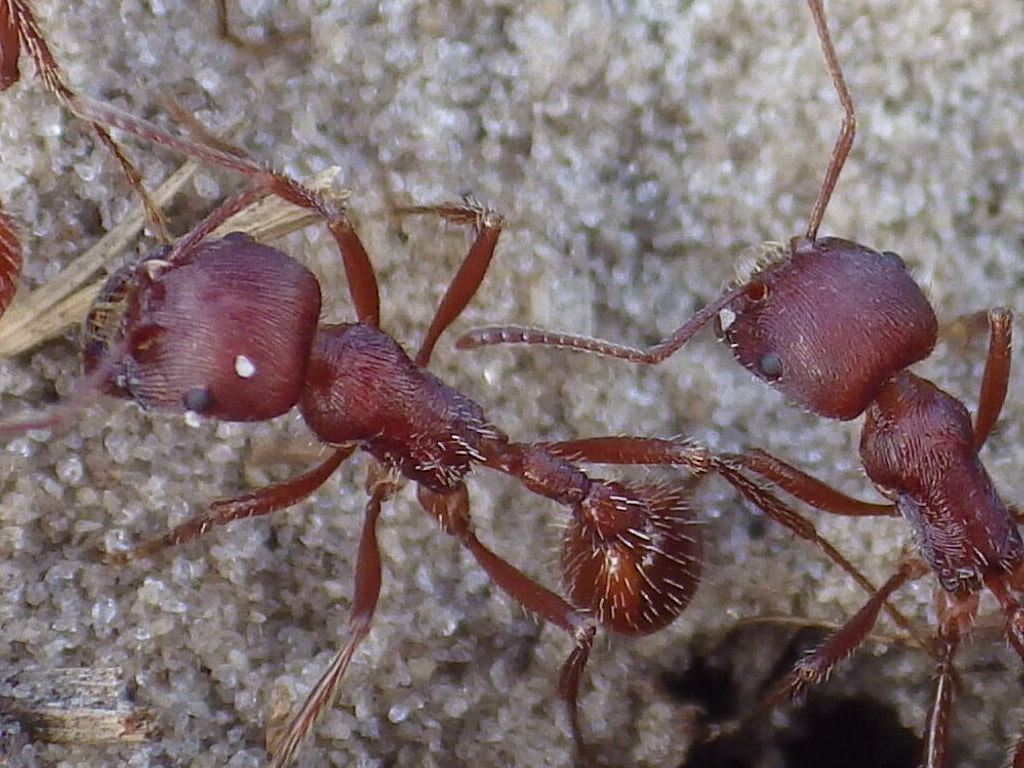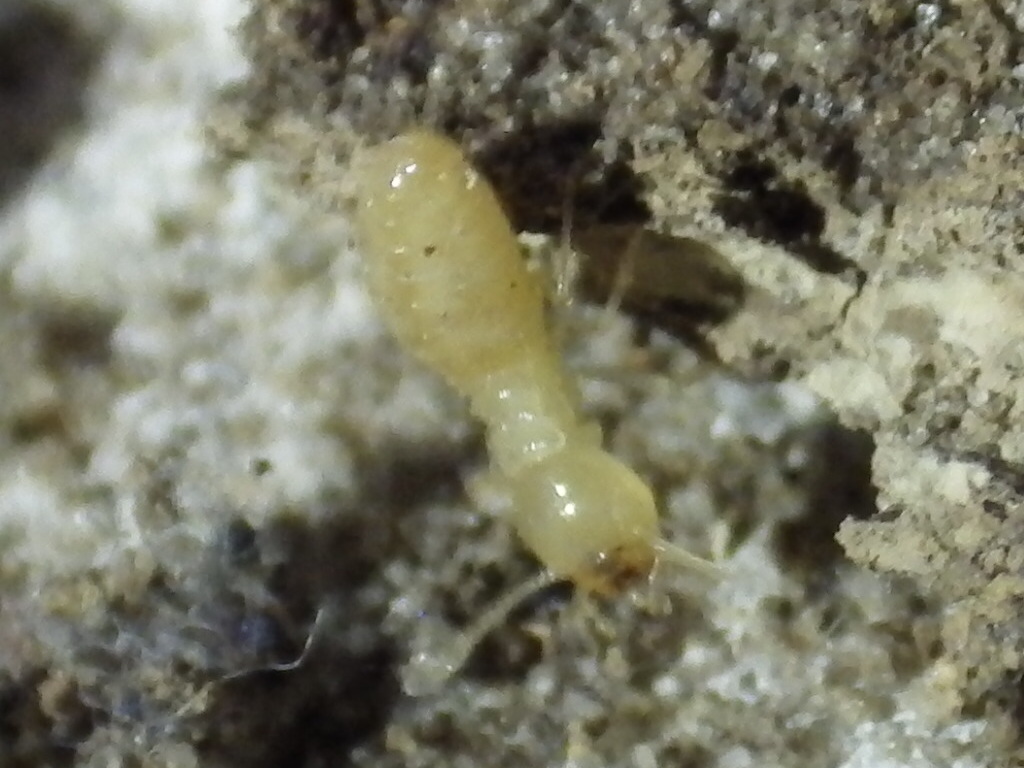
Ants
Florida ants come in many varieties and sizes. Most of our ants are non-native tropical species and have some unique characteristics. People often refer to ants as sugar ants. There are several species of ants that feed on sugar, and therefore are generically known as sugar ants. Its important to identify the species to effectively control these “sugar ants”.
1. Most are void dwellers. This means they don’t have the classic ant mound in the ground. They like to live in the hollows of tree limbs, in bamboo, at the base of shrubbery. When indoors, they take up residence in wall voids, spaces between cabinets and walls, in tool boxes, cardboard boxes, and piles of news papers. I can remember finding a Carpenter Ant colony in a one gallon milk jug that had the top cut off and was full of clothespins!
2. Most are Multi-queen colonies. Just as the name implies, the colony has several egg laying queen ants. This results in very large populations of ants, as well as rapid spreading of ant colonies throughout the home, yard or neighborhood.
3. Treatment for Florida ants Depends on the species. Most ants take to bait quite readily. The question is what type of bait? Your Pest Control Operator will stock several types of baits ie. granular, gel and liquid. He also has to determine the nutritional aims of the foraging ants. Based on the brooding situation of the colony, there may be a high requirement for proteins over carbohydrates. If you use a carbohydrate based bait, the foragers may ignore your bait in favor of a protein meal. Large colonies also spread by “budding”. Budding can be hastened by using lethal sprays. Sprays can make the problem go away for s short time but then it reappears – only twice as bad. Control of ants depends on proper ID, and proper application of liquids, dusts and or baits. Let Combat Pest Control save you time and money.
WHAT CAN YOU DO TO KEEP ANTS AWAY? Here are 8 steps to prevent ants in and around your home.
1. Keep food debris cleaned up.
2. Rinse out cans and bottles of food/drink debris (especially sweet foods)
3. Keep Garbage cans tightly covered.
4. Eliminate trash piles and wood piles
5. Inspect Ornamental plants for aphids, treat with sevin dust.
6. Keep bushes and limbs cut back at least 18″ from home.
7. Don’t leave pet food out in the open for long periods.
8. Wipe up water drops from sinks and keep stoppers in place (ants forage for water in times of drought)
Roaches
Florida Roaches
Florida is host to several species of Roaches to include: American Roaches, Austrailian, Smokey Brown, Surinam, Asian, Florida Woods Roach, Brown-Banded and German (and this isnt the complete list)!
What do roaches eat?
The Exterior Roach species feed on decaying organic matter ie, grass clippings, dead weeds, and leaf litter. The exterior roaches become a problem after heavy rains. When roaches are flooded out of their normal habitat, they flee to the high ground – your house. They gain access through sliding glass doors, poor weather strips, garage doors etc.
How to get rid of Roaches.
Treat the exterior perimeter with a high quality residual products such as SC, or EC sprays and insecticide granulars is typically all that is needed to keep these critters at bay. Removing heavy leaf litter and old mulch goes a long way in eliminating roaches. Its also important to look for egg cases (oothica) on the sides of your home and brush these down whenever you see them.
How to get rid of German Roaches
German Roaches require specific and aggressive treatment to stem their high reproductive potential. These are true parasites of man and infest our living areas. Unlike larger roaches, these roaches cannot be controlled with outside treatments. Depending on the severity of the infestation, German Roaches may require one or more follow up visits to eliminate this problem. German roaches require professional interdiction so dont wait. Contact me, and let me apply my 7 Step Process to knock the problem out once and for all…guaranteed!
HOW PREP FOR A GERMAN ROACH CLEANOUT
1. Empty out all cabinets, inspect everything for signs of roach infestation. Dispose of contaminated items.
2. Wipe down fecal focal points (your Combat Inspector will point these areas out)
3. Move Refrigerator and stove, broom sweep behind these appliances. NOTE: Combat Employees cannot move gas appliances and refrigerators with water supply lines without waiver from homeowner.
4. Wipe up food debris
5. Store food in plastic containers.
6. Reduce clutter, stacks of newspapers, paper bags, cardboard etc.
7. Be prepared to leave the home for 2 to 4 hours to allow the treatment to dry.
8. Schedule followup appointment for one week to 10 days after initial treatment.
Fleas and Ticks
Having dogs and cats increases your odds of getting an infestation of fleas or ticks. However, even petless households are suseptable to a flea or tick infestation. Hunters bring home ticks. One female tick can lay from 2000-4000 eggs in a single session. Fleas can infest squirrels, raccoons and rodents.
Vacant Homes can have horrible infestations of fleas since the host pets are no longer a feeding option for newly hatched fleas. Crawlspaces are perhaps the most difficult areas to eradicate fleas. Several treatments may be required to finally knock out the flea problem, Combat will be with you every step of the way.
HOW TO PREP FOR A FLEA TREATMENT
1. Vacuum all Carpets and Upholstered furniture.
2. Arrange to have pets flea dipped on day of service.
3. Remove all items from the floor.
4. With sheets of paper, mark areas where pets rest or “hang out” for most of their time.
5. Wash or Dispose of pet bedding. If washed, use the highest water temperature possible.
AFTER THE TREATMENT
1. Vacuum the floors at least everyother day. Dont forget to focus along the baseboards!
2. The “pupal window” is the 14 day period after the treatment when flea eggs may hatch. Insecticides cannot penetrate egg cases, but once the eggs hatch, the IGR makes the newly emerged flea sterile….but they still are hungry and will bite. If there seems to be a number of biting fleas after two weeks, then call for an extra service to knock these guys down….no additional charge of course!
Rodents
Rodents are part of nature and they are in the environment. Populations can be reduced outside with bait boxes OUTSIDE. It is never a good idea to use poisons inside of your home. The rats in Florida that we deal with almost exclusively are Citrus Rats or “roof rats”. These rats are like squirrels with no hair on their tails. They prefer move along wires, tops of fences and trees. They are acrobatic and are able to jump several feet to get where they want to go. Rats have a very large requirement for daily water and when they find a water source, they will come back frequently. In the cooler months, they will seek shelter in our homes, sheds, piles of debris, wood etc. The best option is to keep the rodents from getting into your home by sealing entry points. Call Combat Pest Control for an assessment of your home.
WHAT TO LOOK FOR
1. Rub marks (greasy looking marks along runways)
2. Holes larger than a nickle in diameter (even a large rat can fit in a tiny hole)
3. Gnaw marks (wood, wires, pvc, or metal)
4. Fecal droppings (looks like “fat black rice”)
5. Construction flaws (missing soffet vents, a/c chases unsealed, vent stacks uncapped, roof vents missing screening, gable vents open, unsecured crawlspaces, hanging insulation.
6. Footprints on a/c ducts
7. Poor weather stripping at doors.
8. Water sources or shelter. A/C drip lines, flower pots, old grills, overgrowth in yard, trash, garbage.
Termites
 Subterranean Termites – What to look for: Reproductive “swarmers” normally fly in early March. The flights usually occur after a rainy and warm up immediately after cool weather. They also typically fly between the hours of 11am to 1pm. They are black with white wings. The worker (pictured above) is about the size of a grain of rice and spends it’s life within soil. They construct shelter tubes when they move above ground level. That is why wood damaged by Subterranean termites is full of soil.
Subterranean Termites – What to look for: Reproductive “swarmers” normally fly in early March. The flights usually occur after a rainy and warm up immediately after cool weather. They also typically fly between the hours of 11am to 1pm. They are black with white wings. The worker (pictured above) is about the size of a grain of rice and spends it’s life within soil. They construct shelter tubes when they move above ground level. That is why wood damaged by Subterranean termites is full of soil.
Subterranean Treatment Options:
1. Liquid Treatments – Involved treating the soil around the perimeter of the home. Concrete porch, garage and patio slabs will require drilling and “sub-slab injection” to complete the barrier. Interior walls with termite activity should also be treated to stop the termite activity in its tracks.
2. Bait Treatments – Bait treatments use plastic stations that contain “Insect growth regulators” which inhibit the development of termites. Contrary to popular belief, these IGRs are not carried back to the Queen which results in her demise. Actually the workers and “young” termites molt several times as they age. When they ingest the IGR, they are unable to shed their exoskeleton and die. The Queen, soldier and swarmer termites rely on the workers to feed them. Since the workers (who also feed each other) are dying in large numbers because they cant molt, the rest of the colony dies. RIP termites.
Drywood Termites – Drywood queens are physically in your home when you have an infestation. That is why tenting works for this species.
Drywood Treatment Options: There are two types of treatments, “whole house” and “spot treatments” (also known as “local treatment”.
1. Fumigation – No matter what anyone tells you, NOTHING compares to a Fumigation to kill termites. The gas penetrates 100% of a structure and kills all termites SEEN AND UNSEEN. Do fumigations fail? Its rare but it can happen. Failures are usually because of a poor preparation. ie. Gas can leak from floor drains, homes near salt water with tidal effects, not cutting back overgrowth on the ground, holes in tarps or heavy storms that blow tarps apart.
2. Spot treatments – These are effective against known areas of termite activity. Chemicals used include Orange Oil, Termiticide foams, liquids and even dry formulations. A rule of thumb is “a home that can be fumigated should be fumigated”. Sometimes, its not possible to fumigate a structure. In a townhouse situation where one unit has a problem and the other owners don’t want to participate in a fumigation for instance. This would require a spot treatment just to keep a lid on the problem. Known colonies can be eradicated, and technicians can have excellent detection skills, but the problem is you never really know if you got them all.
Spiders
Spiders infest your home when the “fishing is good”. Web weavers are present when there is an abundance of flying insects. Predatory (hunting) spiders are present when large numbers of crawling insects are present ie Roaches. Reduce flying insects (spider food) by using yellow porch lights.